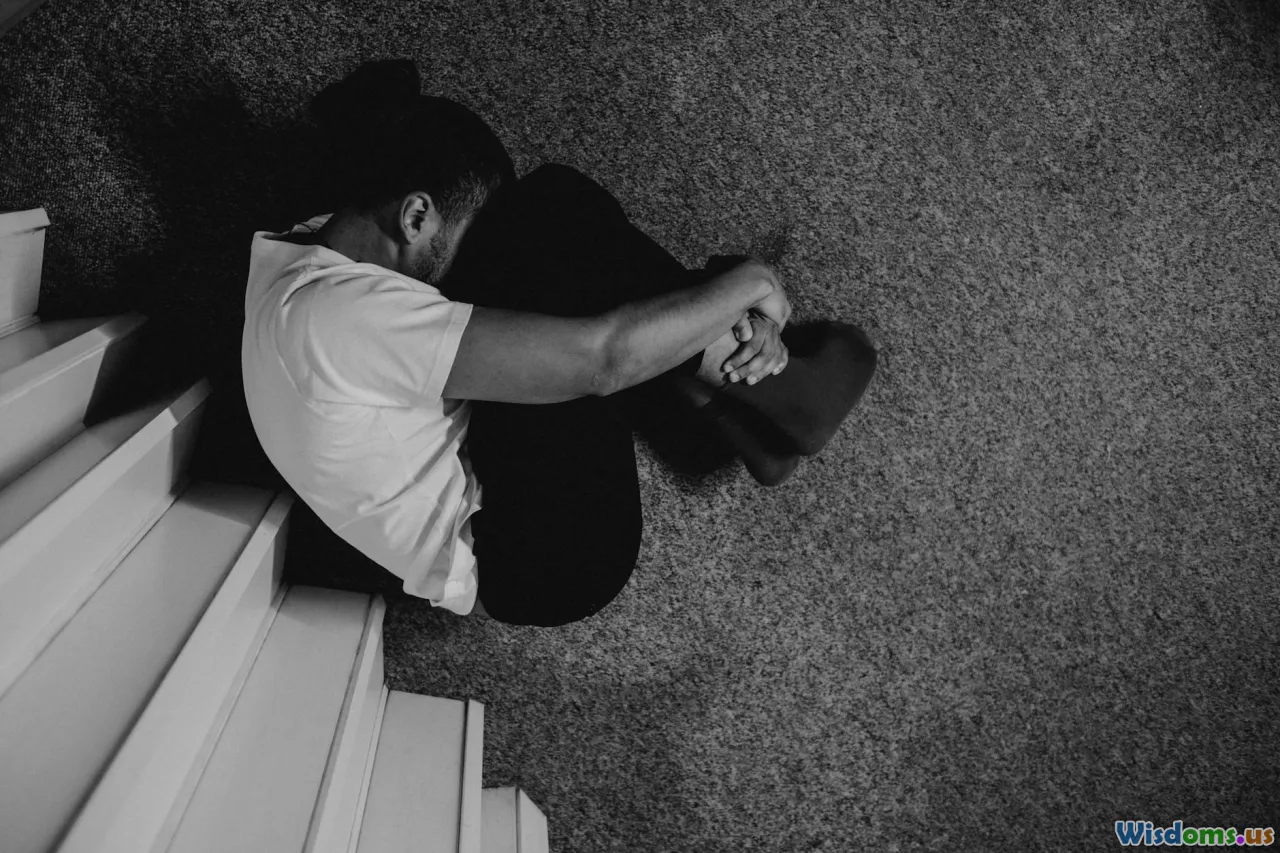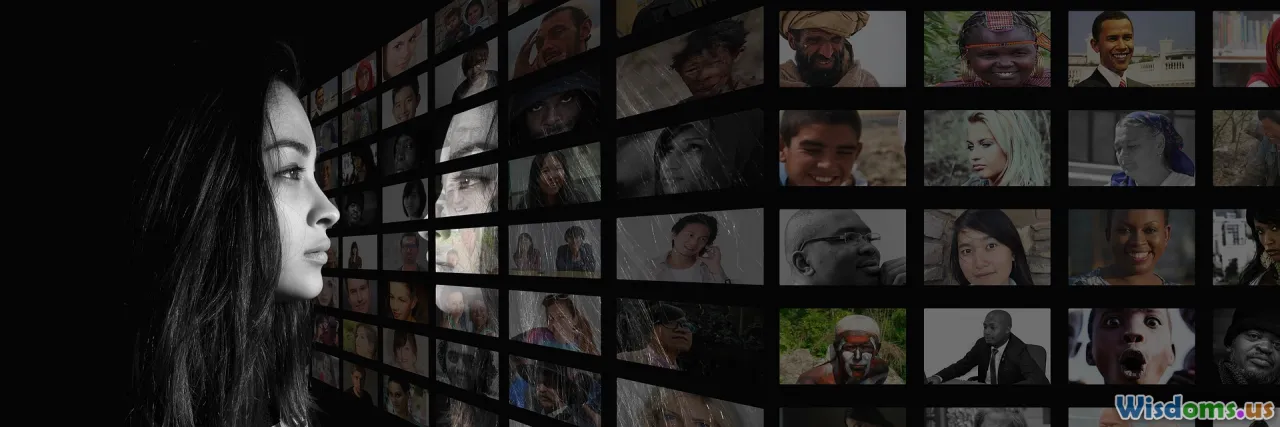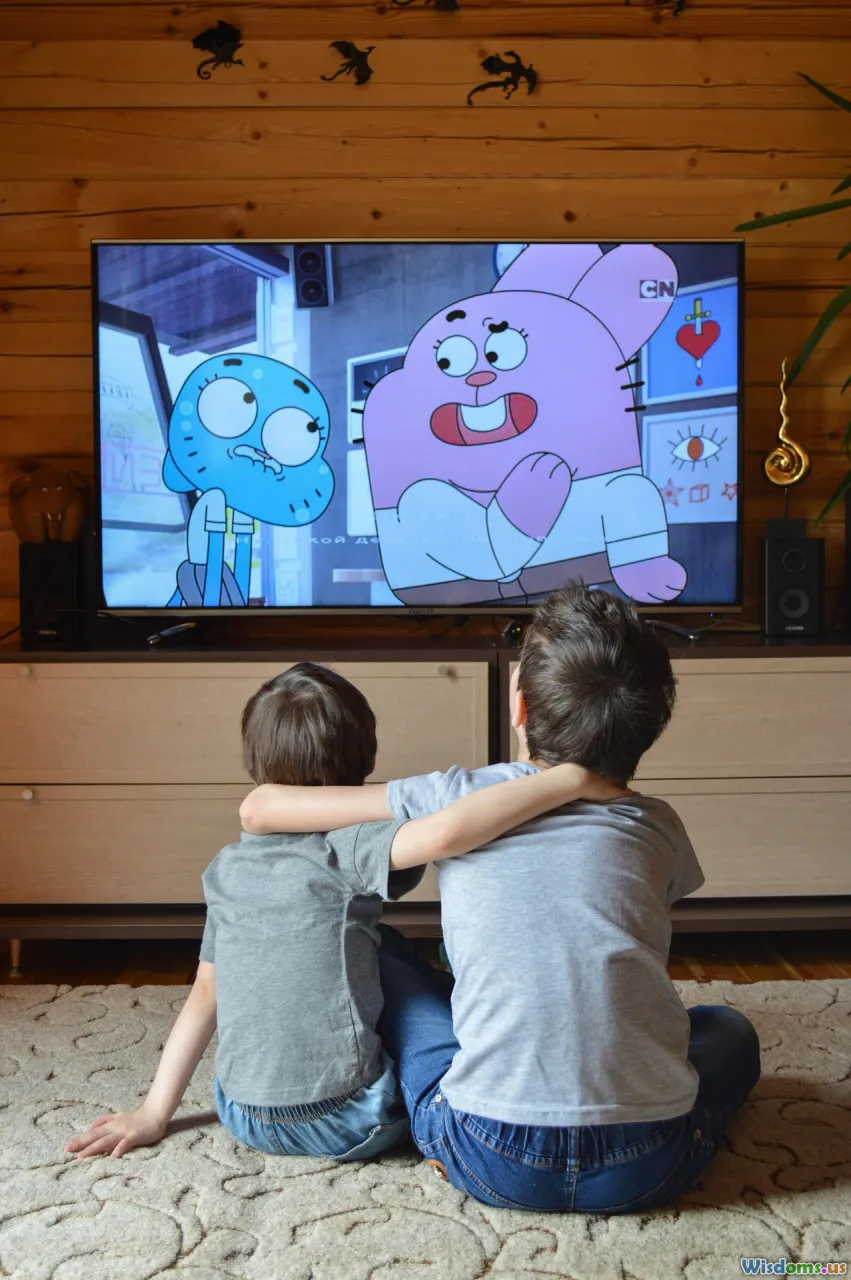
What Makes Medical TV Dramas So Addictive
18 min read Explore the psychology and storytelling techniques that make medical TV dramas irresistibly engaging for audiences worldwide. (0 Reviews)
What Makes Medical TV Dramas So Addictive
From the bustling hallways of County General in ER to the complex personal dramas of Grey’s Anatomy, medical TV dramas have been a staple of global television for decades. As viewers, we revisit the operating room week after week, holding our breath for insanely improbable surgical saves, character betrayals, and touching moments of resilience. But what’s behind our fascination? Let’s dissect the anatomy of a genre that continues to grip audiences worldwide for years on end.
Life, Death, and Everything Between

Medical dramas place life’s most extreme moments front and center. High stakes situations—cardiac arrests, emergency traumas, and complicated diagnoses—create a pulse-pounding atmosphere rarely matched by other genres. The ever-present possibility of life or death consequences makes for compelling stakes that consistently draw viewers back each week.
Consider the famous pilot episode of ER in 1994, which plunged viewers into a relentless overnight shift with Dr. Mark Greene and his team. The episode wasted no time capturing the adrenaline-soaked chaos of an emergency room. Similarly, shows like House challenge us with complex diagnostics. Here, the central stakes are not only whether a patient will survive, but also whether the team can unravel medical mysteries before it's too late.
Statistics back up audience fascination with these themes. Nielsen ratings show that episodes featuring dramatic or tragic accident sequences often spike viewership for medical dramas. The contrast of hope and tragedy unsparingly reminds us of our own vulnerabilities, while allowing us to experience them vicariously from the safety of our own homes.
Compelling Character Arcs and Relationships

Beyond their core medical plots, these shows succeed because of unforgettable characters and the intricate relationships between them. Where there are hospitals, bystanders expect not just medical miracles but heartfelt connections, heated rivalries, and often, romance under duress.
Grey’s Anatomy, for example, is legendary for its blend of personal and professional storylines. The complex dynamic between Meredith Grey and Cristina Yang ("her person"), not to mention iconic relationships like Meredith and Derek Shepherd, keep audiences returning—sometimes for over 20 seasons!
Unlike crime procedurals that emphasize a revolving door of mysteries, medical dramas typically invest heavily in developing the vulnerabilities, ambitions, and flaws of their main cast. Through years-long character arcs, viewers grow emotionally invested, celebrating triumphs and mourning losses alongside doctors and nurses who feel like family.
Examples abound: from Dr. Carter's evolution from rookie to esteemed leader in ER, to Dr. House's battle with addiction and isolation. Even supporting characters enjoy nuanced masterstrokes—like the cheerful Nurse Jackie hiding a dark addiction. Thanks to patient-focused cases, the personal stakes are continually interwoven with the human stories of those delivering care.
Realism and Medical Accuracy: Science With Drama

Medical dramas walk a fascinating tightrope between accuracy and entertainment. Audiences revel in the jargon-laden intensity, while also appreciating a level of authenticity—even if dramatic license takes over as needed.
Many top series employ medical consultants. Dr. Zoanne Clack, a real trauma doctor, has been a longtime writer and producer for Grey’s Anatomy, ensuring that code blues and rare afflictions are depicted with reasonable credibility. The 2005 series House was praised for cleverly disguised, real-life diagnostic riddles (inspired by Dr. Lisa Sanders' New York Times column). Meanwhile, select ER episodes were written and directed by Michael Crichton, himself a Harvard Medical School graduate.
However, even with consultants onboard, shows often exaggerate for effect. Cardiac paddles are dramatically misused; rare diseases pop up with ludicrous frequency. Still, these dramatized elements serve the story, not meant to pass muster with medical boards but to create cathartic tension and swift resolutions. Bolstered by credible lingo and set design, audiences are suspended between learning and entertainment.
Medical misinformation can be a downside: Studies published in the Journal of Health Communication reveal that regular viewers sometimes misinterpret medical facts as reality. Yet, producers argue that exposure to health-related topics sometimes promotes real-world learning and dialogue about topics like organ donation or end-of-life care.
The Thrill of the Unpredictable

One hallmark of medical TV dramas is their exhilarating unpredictability. In the span of an hour, audiences can experience a rollercoaster of suspense, emotional reversals, and shocking twists. Where standard hospital cases quickly morph into rare syndromes, or a patient’s mystery symptoms spark a race against time, these shows keep viewers glued to the screen with every turn.
House MD, perhaps more than any, mastered this format. Each episode became a relentless puzzle: strange hallucinations, collapsing wedding guests, or unexplainable rashes. Audiences found themselves mentally participating, theorizing the diagnosis before the inevitable whiteboard “reveal.” (Lupus, it’s never lupus...)!
Unpredictability also applies to the cast. The genre is infamous for killing off beloved characters in shocking fashion—think Dr. Derek Shepherd’s unexpected fate, or the periodic bombshell tragedies on Chicago Med. This willingness to embrace the unexpected sustains intensity and proves emotional investment. Gamblers call it "risk and reward"—here, viewers wager their hearts for unpredictable payoffs.
Mirroring and Escapism: Seeing Ourselves (Or Not)

Hospital corridors in these dramas double as mirrors of our own hopes and anxieties. Whether we dream of heroism in adversity or grapple with fears of illness and loss, medical dramas touch emotional chords across society, offering both confrontation and comfort.
For some, shows provide escapism. In an ordinary world, it is rare to witness clear-cut victories over death or impossible dilemmas solved. Watching doctors save a life within an episodic structure supplies instant gratification, release from day-to-day monotony, and the gratifying (if idealized) resolution of suffering. A Harvard Medical School study suggests these portrayals can relieve anxiety and foster feelings of hopefulness among viewers facing their own health struggles or grief.
Yet, the best medical dramas balance escapism with realism. Plotlines that feature medical errors, burnout, and resource shortages mirror the difficulties and moral ambiguities facing healthcare professionals. Perspectives of patients, families, and hospital politics broaden the lens beyond just the heroic caregiver. In the words of The Good Doctor producer David Shore: “We don’t simply show victory. We show all the messiness—fear, rage, isolation, and ultimately, compassion.”
Social Issues and Breaking Taboos

Medical dramas stand out for handling tricky societal issues and fostering public dialogue rarely seen on traditional series. By virtue of their setting, these shows naturally grapple with topics shrouded in silence: sexual health, mental illness, racism, addiction, LGBTQ+ rights, and end-of-life decisions.
Grey’s Anatomy memorably brought surgical racism to prime-time with Dr. Miranda Bailey’s struggles and showcased the journey of Dr. Callie Torres, one of network TV’s first major bisexual characters. Similarly, New Amsterdam boldly tackled questions of health insurance and pharmaceutical ethics, while The Resident examined the troubling costs of profit-driven medicine.
This tradition began with earlier series, including St. Elsewhere, that addressed AIDS stigma in the 1980s. More recently, modern entries like Transplant and The Good Doctor have cast minority and neurodiverse leads—providing nuanced, realistic accounts of immigration trauma and autism.
Viewers regularly cite these issue-forward storylines as both educational and cathartic. Even controversies, such as Chicago Med’s opioid investigations or House’s debate over euthanasia, spark lively discussions in online communities and can even nudge policy dialogues. By marrying narrative with relevant social commentary, medical TV dramas build empathy and instigate reflection beyond the screen.
The Allure of the Setting: Hospitals as Storytelling Engines

Hospitals are uniquely boundless storytelling canvases. New patients flow in each episode, offering a “case of the week” structure where writers can blend variety with continuity. Unlike most office-based settings, hospitals are hives of ceaseless activity and high emotion—births, deaths, crises, recoveries, and the entire gamut of human drama unfolding within one institution.
Every hospital hall offers a crossroads: ethical dilemmas, chance encounters, healing, and heartbreak. Within the maze, viewers explore forbidden romances, power struggles, and stories that cross socioeconomic boundaries. One shift might include treating the town’s mayor and a homeless teenager, underlining issues of access and privilege.
Even the physicality of the hospital accentuates drama. The frenetic energy of a code blue in the ER, the sterile calm (or terror) of the operating room, or quiet moments in the cafeteria provide natural set-pieces for emotionally resonant moments. The textured hospital setting thus becomes a character in its own right, vital and unyielding.
Ingenious Use of Formula and Seriality

Medical TV dramas are among the few genres that deftly balance episodic and serialized storytelling. While viewers can often tune in to enjoy the tension of a single medical crisis (case-of-the-week), recurring viewers are rewarded with complex, ongoing narratives.
For example, Grey’s Anatomy is famous for “bottle” episodes focusing on dramatic events over a tight timeframe (e.g., a ferry crash or a hospital lockdown). At the same time, multi-season arcs involving characters’ personal lives, rivalries, and romances, cultivate loyalty and invest longtime viewers with rich payoff.
This hybrid structure offers accessibility for newcomers—who can understand immediate medical crises—while rewarding deeply engaged audiences tracking character developments for years. The result is a genre tough to outgrow: Whatever draws us in initially (cases, character, conflict), the multi-tiered structure allows the series to evolve as our interests do.
Technological Advances: A New Layer of Engagement

In recent years, leaps in special effects and medical technology have enabled more realistic and visually impactful portrayals. Advances in prosthetic makeup, digital blood, and CGI have let shows like The Good Doctor and New Amsterdam scale up the realism and dynamism of surgical episodes.
Interactive medicine—like robotic surgery, high-definition imaging, and virtual case discussions—reflects the evolution of contemporary healthcare, lending authenticity and novelty to the storytelling. These onscreen innovations not only wow viewers but also inspire budding medical professionals: studies in Academic Medicine have traced the aspirational effect of shows like Grey’s Anatomy among pre-med students.
Technology also plays a critical role offscreen via social media. Actors, showrunners, and consultants engage fans directly, fielding questions about plot twists, real-world procedures, or dispelling medical myths. This digital interaction adds to the addictive quality, extending engagement far beyond weekly broadcasts.
Tips for Maximizing Your Medical Drama Experience

Are you already hooked—or curious about starting a medical drama binge? Here are suggested tips for a more enriching, less overwhelming journey through this thrilling TV universe:
-
Start with a Show That Fits Your Mood: Want high-pulse action? Try ER. Interested in personal drama? Private Practice or Grey’s Anatomy may fit better. Seeking cerebral medical puzzles? Give House or The Good Doctor a go.
-
Don’t Sweat the Science: Remember that while these shows aim for realism, plot and character trump perfect accuracy. If you’re keen to know more about actual medicine, check out companion podcasts or fact-check via trusted medical websites.
-
Join the Community: Fan forums, Reddit, or Twitter create spaces to debate storylines, ships, and (inaccurate) CPR techniques—a great way to enrich the experience and meet fellow fans.
-
Respect Emotional Highs and Lows: Doctors and patients on TV face a rollercoaster of fates, and so will you. Don’t hesitate to step away after especially tough episodes.
-
Revisit the Classics: Consider giving earlier trailblazers (St. Elsewhere, MASH*, Chicago Hope) a chance to appreciate the genre’s evolution.
Medical dramas take us to the frontlines of humanity, offering not only heart-stopping storytelling but also lessons about resilience, compassion, and our own hopes and fears. Ultimately, that’s why, bedside or sofa-side, we keep coming back: in these hospital halls, every episode feels like a matter of life and death.
Rate the Post
User Reviews
Popular Posts


















